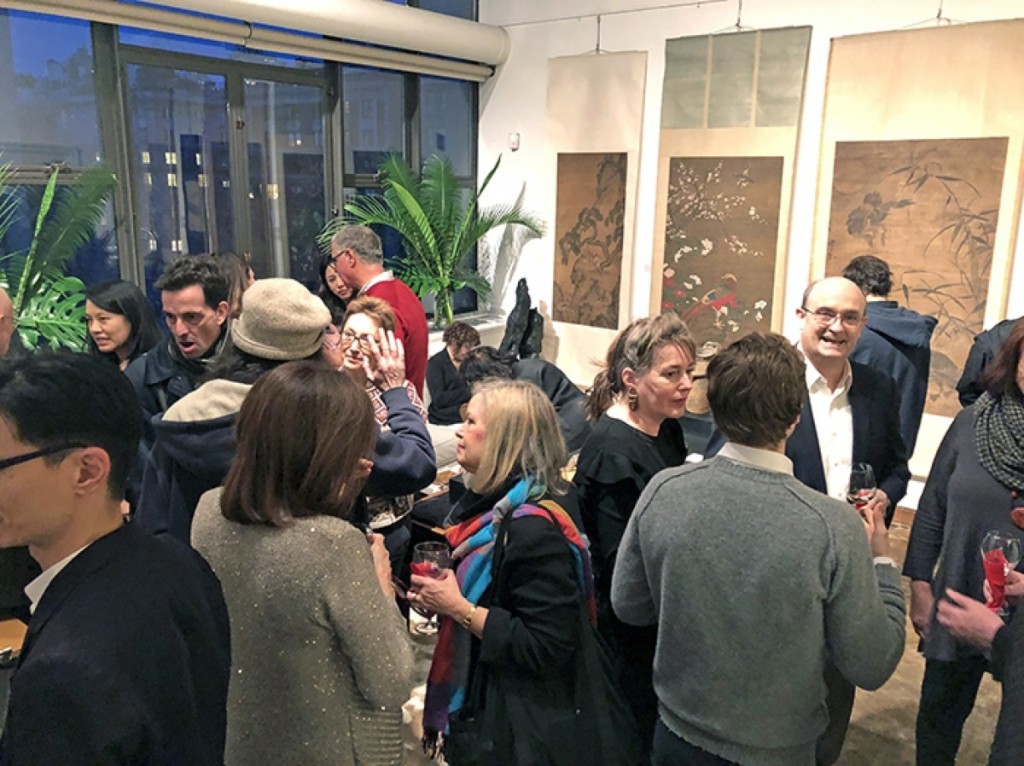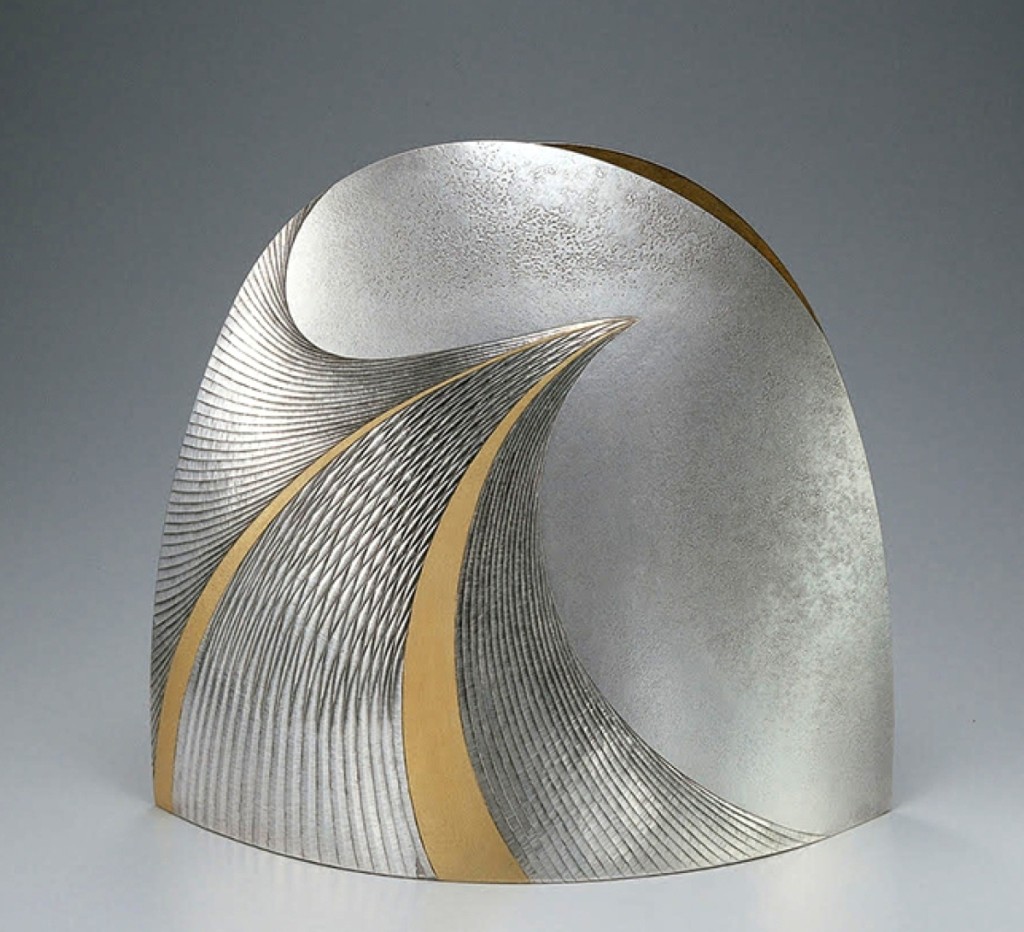
Asia Week’s fall edition features galley exhibitions showcasing traditional and contemporary examples of Asian painting, sculpture, ceramics and more.
NEW YORK CITY – From September 6-14, it’s Asia Week in New York. Several dealers participate in this smaller fall edition with galleries open to the public, showcasing traditional and contemporary examples of Asian painting, sculpture, ceramics and more. Think of it as a teaser for the March 2020 edition of Asia Week New York. Here’s our guide to the exhibitions on view. Many shows remain open past September 14 – please check each listing below for details.
Joan B. Mirviss is conducting two exhibitions from September 10 through October 25: “Composite Memories: The Clay Art of Kishi Eiko” and “Nami: Shikaku Geijutsu / Waves of Optical Illusion: Ogata Kamio.” One of the foremost women artists working in the field of contemporary Japanese clay sculpture, Kishi Eiko (b 1948) has achieved international success, consistently winning awards in the United States, Japan and Europe. Leaving function behind and perfecting her own signature technique, Kishi creates powerful, poised and architectonic sculptures. Meanwhile, the unique and optically stunning marbleized ceramics of Ogata Kamio (b 1949) have earned this Hokkaido artist memberships in two craft societies in Japan and entry into numerous international exhibitions, despite his rural birthplace. The exhibition at Joan B. Mirviss LTD will be this master ceramist’s first solo exhibition outside Japan. The gallery is open Monday through Friday, from 11 am to 6 pm, at 39 East 78th Street, fourth floor.
Dai Ichi Arts Ltd is presenting “Yakishime: Whispering Ash.” Yakishime is an unglazed ceramic that has been fired in a wood or any other kind of kiln. Directly translating to fire-tight, yakishime draws on the concept of Wabi-sabi and Japan’s history. These unglazed works feature dry, unadorned surfaces that perfectly embody wabi-sabi’s reverence for natural imperfection. Yakishime gave postwar Japanese artists new creative pathways while blending beautifully with traditions like the tea aesthetic. “Yakishime: Whispering Ash” presents works by Tsujimura Shiro, Kaneshige Kosuke, Isezaki Jun, Tani Q, Yokoyama Naoki, Yamamoto Izuru, Tsujimura Kai, Shimizu Keichi and Kohara Yasuhiro, among others. The exhibition is on view September 5-20, from 10 am to 5 pm, at 18 East 64th Street, #1F, with an opening on September 5, from 5 to 8:30 pm.
In Kaikodo’s exhibition “Sightings: Birds in Chinese & Japanese Art,” the Chinese paintings date from the Thirteenth to the Nineteenth Centuries, with more than half from the Thirteenth to the Fifteenth. Many of the subjects are presented in such natural habitats as ponds and forests or woodlands, as if the viewer were a birdwatcher happening upon a scene. Meanwhile, The Japanese paintings comprise a much more diverse group. Naturalistic images include Tadanaga’s “Hawk in Oak” and Morikage’s “Swallow on Lotus,” both of the Seventeenth Century, as well as the Nineteenth Century works “Hawk in Winter” by Chikuto and “Pheasants” by Baiitsu. These are countered by such Nineteenth Century narrative or anecdotal paintings as “Cockfight” and “Archer with Falcon,” along with a convocation of disparate birds perched happily together on branches that sweep across a handscroll by Gessho. In addition, a selection of Chinese and Japanese ceramics and works of art will be on view. The exhibition will be on view in the gallery from September 6 to December 6, at 74 East 79th Street, #14B.

Otsuki Masako (b 1943), “Silver Vase ‘Ko’” (Sparkling Water), 2007, silver metal carving with gold decoration, 11-7/8 by 13 by 8¼ inches.
Onishi Gallery presents “Gold and Silver Waves: Contemporary Japanese Metalwork.” As Japanese contemporary metalwork is a relatively new concept to American audiences (both museum institutions and individual collectors), Onishi Gallery feels especially compelled to share the beauty and unique techniques of this Japanese craft with the public. Of the ten metalwork artists featured, two have been designated “Living National Treasures” by the government of Japan for their rare traditional knowledge and high level of creative skill: Nakagawa Mamoru (Living National Treasure); Osumi Yukie (Living National Treasure); Otsuki Masako; Oshiyama Motoko; Hagino Noriko; Hata Shunsai III; Sako Ryuhei; Hannya Tamotsu; Hannya Taiju; and Miyata Ryohei. The show is open September 5-28, Tuesday through Saturday, from 11 am to 6 pm, at 521 West 26th Street. The opening reception on September 5 takes place from 6 to 8 pm.
Scholten Japanese Art presents “Brush – Block – Baren: Japanese Woodblock Printmaking,” September 5-14. Traditional Japanese woodblock prints are collectively referred to as ukiyo-e, which literally means pictures (“e”) of the floating world (“ukiyo”) and is derived from a Buddhist concept pertaining to the fleeting nature of life. However, during the Edo Period (1615-1868), the concept of ukiyo acquired a more nuanced meaning: the impermanence of our existence became a justification to indulge in the pleasures and entertainments that are available at this fleeting moment (for a price) – as such, the realm of the floating world was that of the pleasure quarters, houses of assignation, teahouses, restaurants, leisure boats and the theater districts. Images of these pleasures were affordable and widely available in the form of woodblock prints and illustrated books depicting an array of subjects, including kabuki actors, sumo wrestlers, stylish bijin (beauties), meisho (famous places), legendary musha (warriors) and kacho (birds and flowers). It was a very big market indeed. At its height in the 1840s, there were more than 250 woodblock print publishers, the majority of which were located in the largest city of Edo.
Scholten Japanese Art is at 145 W. 58th Street, Suite 6D. For additional information, www.scholten-japanese-art.com or 212-585-0474.











